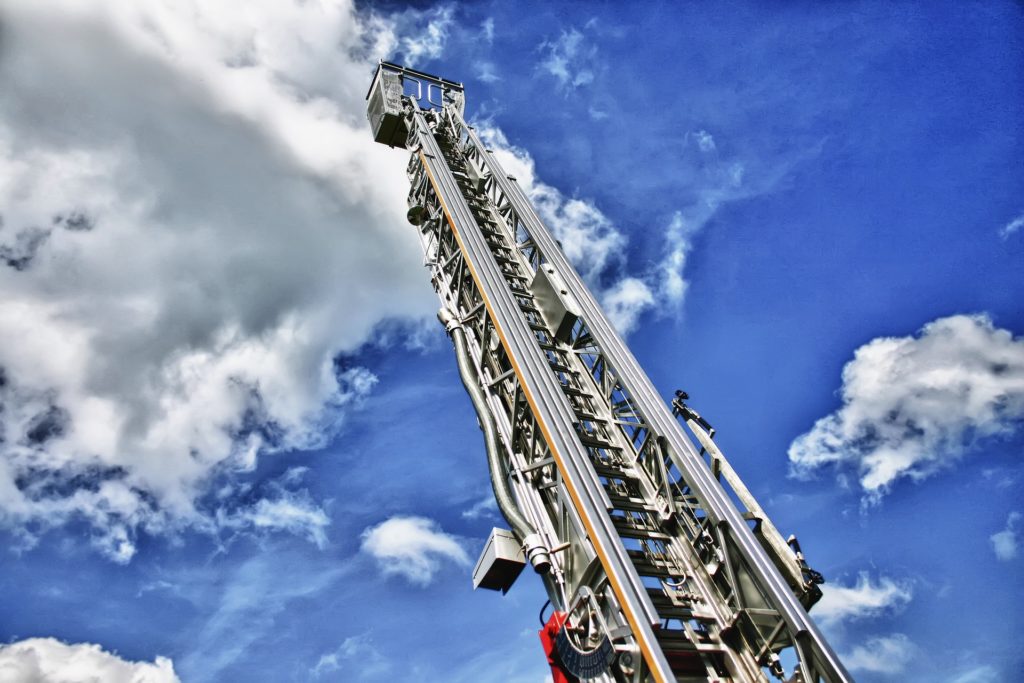 Ladders are a necessary tool at many job sites, and such frequent use can make it easy to forget that ladders pose some serious dangers. Falls are among the most common workplace accidents in the United States, and falls from ladders are worse than mere slips and falls.
Ladders are a necessary tool at many job sites, and such frequent use can make it easy to forget that ladders pose some serious dangers. Falls are among the most common workplace accidents in the United States, and falls from ladders are worse than mere slips and falls.
It is important for businesses to provide their workers with ladders that are in good condition, designed for the right use, and replaced as needed to keep everyone safe. When basic safety standards are not met, serious accidents and potentially fatal injuries can occur.
Whose Responsibility Is Ladder Safety?
Proper ladder safety rests on both the workers at a job site and the managers and employers who oversee them. Each party has different responsibilities, and when both work together, injuries can be avoided.
- Worker Responsibilities: When it comes to ladder safety, workers are responsible for their own personal conduct while on or around a ladder. This means that workers need to follow safe practices when climbing onto or off a ladder, as well as when working on the ladder itself. Other workers need to behave appropriately when around a ladder that someone else is on. Workers who spend a lot of time using ladders should inspect them routinely to look for any damage or other issues that could result in an accident, and report this information to managers and employers at a worksite.
- Employer Responsibilities: Employer responsibility begins the moment a worker is hired, particularly in providing adequate training. This means the employer needs to make sure all workers are trained in how to use ladders and provide refresher training as needed for workers who have been with the company for awhile. Employers also need to ensure that any ladders they provide are in good condition and designed for the kind of work their employees are performing. This includes making sure that the ladders can support the loads that workers are going to carry while going up or down them, and securing them properly.
In one case we handled, a ladder turned 45 degrees while a worker was on it, though there were ropes securing both the top and bottom. He fell, and the company claimed since the ladder was “secured,” they were not liable. However, attorney Kenneth Halperin pointed out that no one inspected the ropes or tested them prior to use. Our client got a $450,000 settlement.
Accidents and Injuries Due to Ladders
In general, common ladder accidents at worksites include:
- Falls: Falling is worse the higher a person is from the ground. This makes ladder falls particularly dangerous.
- Ladder Collapse: Even when workers use ladders properly, the ladder may collapse. This can happen either because the ladder is not supported properly, or it was somehow damaged. When a ladder breaks, anyone on, under, or around it can be injured as it falls.
- Falling Objects: While falling from a ladder poses a danger to the person on it, falling objects from a ladder are a danger to those below. All tools and materials should be secured by the person on a ladder to reduce the chance of anything falling down onto others nearby.
Common injuries include:
- Lacerations: Cuts and scrapes can be pretty minor. More serious cuts may require medical attention.
- Broken Bones: Broken bones are usually not life-threatening, but they can be very painful and take weeks off of work to heal.
- Internal Injuries: Serious falls can result in injuries to internal organs, such as a ruptured spleen or punctured lung. Emergency medical treatment is required for such injuries.
- Neck and Spinal Injuries: Falls can result in damage to the neck and shoulders, as well as the spine. Such injuries can cause chronic pain or result in paralysis.
- Traumatic Brain Injuries: Any accident that involves a blow to the head can cause a traumatic brain injury. These are often serious, sometimes causing changes in a person’s personality, abilities, and lifestyle. Brain trauma may also be fatal.
Fall Protection with Ladders
When all else fails, fall protection can help reduce the seriousness of an accident. For ladders, fall protection includes the use of harnesses when workers are at great heights, as well as ropes to secure them in place. Other workers should be available to hold the ladder for quicker jobs. Tall fixed ladders should have cages or other forms of fall protection to reduce the chance of serious injury.
When ladders are used in combination with other potentially dangerous objects, like scaffolding, it’s important for each element have proper fall protection for the people working on it. When employers or third parties on a construction site do not promote, enforce, or maintain ladder safety, they can be held liable if someone is injured as a result. If you suffered a fall from a ladder, please contact the team at Wingate, Russotti, Shapiro, Moses & Halperin, LLP. We have handled hundreds of NY construction fall accident cases, and we work hard to get you the compensation you need to recover.